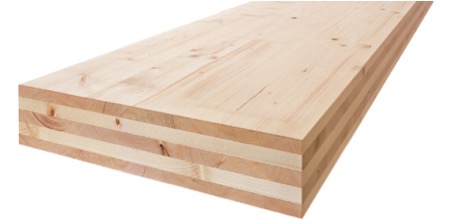
The global engineered wood products market is expected grow at a CAGR of over 26% during the period 2016-2020, according to Technavio’s latest report. Source: Business Wire
In this report, Technavio covers the market outlook and growth prospects of the global engineered wood products market for 2016-2020.
The market is further categorized into four product segments, including Ibeams, Glulam, laminated veneer lumbar (LVL), and others of which the I-beams segment dominated the market with more than 36% of the overall market share in 2015.
“The production of engineered wood products is growing at an impressive CAGR of over 26%. Engineered woods products are gaining popularity over hardwood owing to their sustainability. Various factors such as stringent regulations and rapid deforestation are likely to drive innovations in manufacturing engineered woods,
decreasing the overall cost of production,” says Chandrakumar Badala Jaganathan, a lead textile, fiber, and composites research expert from Technavio.
Technavio’s research study segments the global engineered wood market into the following regions:
- EMEA (Europe)
- North America
- APAC
The production of engineered wood products in EMEA is expected to grow at a CAGR of more than 29% over the forecast period. The engineered woods products market increased remarkably in EMEA since 2005.
Currently, most of the production in Europe is consumed within the region. The consumption of glulam is expected to double between 2016 and 2020. The majority of the glulam in the region is produced in Germany, Austria, and Finland.
Most of the produce is sold in regional markets. However, Finland exports almost 65%-70% of its produce to Japan. Italy was the largest importer during the 2000s. However, the imports have declined in the recent years owing to the economic downturn.
The primary markets are in Central Europe. These markets are projected to grow well during the forecast period, and many sawmills have already participated in extending their finger-joining capacity in the recent years.
North America
The production of engineered wood products in North America is expected to grow at a CAGR of over 26% by 2020. The construction of non-residential buildings in the Americas has grown considerably since 2010 and an estimated 35% of the construction is wood framed making the US, one of the major markets for Canadian
forest products.
Moreover, the residential construction segment in North America is foreseen to grow rapidly as the US housing market is recovering from its prolonged slump.
Canada is one of the leading producers and exporters of softwood lumber. Softwood lumber almost accounts for 25% of the Canada’s forest product exports in terms of value. The US is the chief export market for Canada, where softwood lumber is used to build houses.
Asia Pacific
The production of engineered wood products in APAC is predicted to grow at a CAGR of approximately 25%.
The construction market in APAC is developing fast, owing to factors such as increased per capita disposable income, which has resulted in an increase in spending on housing and furniture.
Although the price of American timber is rising in some markets due to the growing demand, the volatility of prices of regionally-grown timber especially in China poses a challenge to the wood producers in APAC.
Further, substitutes such as plastic laminates and foils, which are similar to wood, are likely to intensify the threat.
The non-wood flooring sector is also gaining popularity. “Manufacturers are focusing on providing the products regionally, rather than exporting,” says Mr Chandrakumar.
The top vendors in the global engineered wood products market highlighted in the report are:
- Arauco
- Boise Cascade
- Lowe’s
- Roseburg
- Weyerhaeuser







